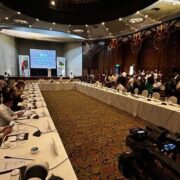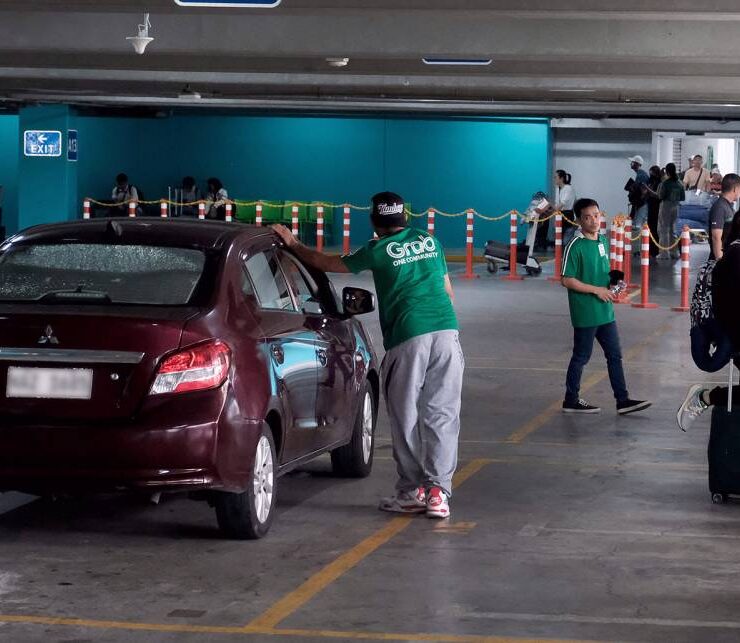PH adds corvette-class warship to naval assets

- The first of the country’s two corvette-class warships, the 3,200-ton missile-guided BRP Miguel Malvar (FFG-06), has arrived and will soon patrol the West Philippine Sea and northern Luzon.
- It is the first of the Philippine Navy’s two guided missile corvettes from South Korea’s Hyundai Heavy Industries that is equipped with antiship, antisubmarine and antiaircraft capabilities.
- The vessel is part of a P28- billion contract bagged by Hyundai in 2021 through the Navy’s Corvette Acquisition Program.
The first of the country’s two corvette-class warships, the BRP Miguel Malvar (FFG-06), will soon patrol the West Philippine Sea (WPS) and northern Luzon as Defense Secretary Gilbert Teodoro Jr. led the arrival honors for the 3,200-ton missile-guided vessel at the Naval Operating Base in Subic on Tuesday.
In his speech, Teodoro said the arrival of the BRP Miguel Malvar was “a critical step toward developing a self-reliant and credible defense posture.”
The vessel, named after a Philippine revolutionary hero, will be commissioned next month, said Rear Adm. Roy Vincent Trinidad, Navy spokesperson for the WPS.
It is the first of the Philippine Navy’s two guided missile corvettes from South Korea’s Hyundai Heavy Industries that is equipped with antiship, antisubmarine and antiaircraft capabilities.
The vessel is part of a P28- billion contract bagged by Hyundai in 2021 through the Navy’s Corvette Acquisition Program.
Its sister ship, the BRP Diego Silang, is expected to be delivered to the country by September.
Protector of waters
“Miguel Malvar is here today not only to serve as a deterrent and protector of our waters, but also as an important component in joint and combined operations as we work alongside allies and uphold the norms of international law,” Teodoro said.
The arrival of the Miguel Malvar came in the face of growing Chinese aggression against Philippine ships and fisherfolk in the WPS.
“One of the hallmarks of an investment horizon for this country is the blue economy. How can you develop a blue economy if you do not have a strong navy?” Teodoro said, adding that a strong navy was needed as an anchor, a backbone and a spine of the blue economy.
“So, this is our offering to those that went before us, to the heroes who went before us, who we will honor tomorrow,” he said, referring to the country’s commemoration of Araw ng Kagitingan (Day of Valor) on April 9.
P34-M drone package
The Philippine Coast Guard (PCG), which also defends against Chinese aggression in the WPS, received on Tuesday from Australia a P34-million package consisting of 20 world-class aerial drones as well as training on how to operate these.
Drone specialists from the Australian government are already in the Philippines to conduct four days of training for 30 members of the PCG Aviation Command Unmanned Aerial Vehicles Squadron.
“This support further boosts our ability to pursue more precisely, appropriately and sustainably our complex rights and obligations from being both a maritime and archipelagic country,” PCG commandant Rear Adm. Ronnie Gil Gavan said during the turnover ceremony held in Mariveles, Bataan.
The drones, according to Gavan, will help the PCG “to further advance its fundamental role as a responsible protector of rules to help keep the peace and prosperity for our own people and all law-abiding users of our seas to enjoy.”
Australian Ambassador to the Philippines Hae Kyong Yu, who turned over the drones to Gavan, said Canberra was proud of its long-standing cooperation with the PCG and its efforts “to provide practical support for their crucial work.”
“I am pleased to deliver this package of state-of-the-art drones and training. It is a tangible example of our increased maritime cooperation with the Philippines and a contribution that supports PCG’s modernization efforts,” Yu said.
The equipment was provided as part of Australia’s civil maritime cooperation, which also includes vessel remediation, postgraduate scholarships, operational training, marine protection and annual law of the sea courses, she said.
In February this year, Australia joined a maritime exercise with the Philippines, the United States and Japan in the WPS in the face of growing regional tensions due to Beijing’s harassment in the disputed South China Sea.
Australia has backed the 2016 arbitral ruling invalidating Beijing’s sweeping claims in the South China Sea, even calling out China for its harassment of Filipino sailors and fishermen in the WPS.
A total of 40 Chinese vessels, including eight China warships, were spotted in the WPS in March, the Philippine Navy said.
Trinidad said eight People’s Liberation Army Navy (PLAN) and 14 China Coast Guard (CCG) vessels were monitored in Panatag (Scarborough) Shoal, six CCG vessels in Ayungin (Second Thomas) Shoal, seven PLAN and five CCG vessels in Escoda (Sabina) Shoal.
“Suffice it to say that we have been conducting our [sea and air] patrols… to show that we are not deterred by their presence within our exclusive economic zone,” Trinidad said at a press briefing at Camp Capinpin in Tanay, Rizal.





















